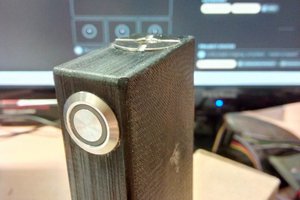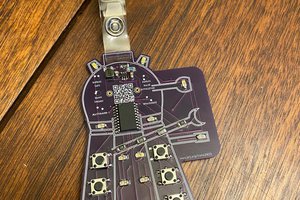430man Evolution has a pretty simply underlying idea: A chain of LEDs that can be triggered at multiple points.
Floating pins capture touch events and a light pulse propagate through the sculpture. Thanks to the ultra low power feature of the MSP430 the system of 8 MCUs only consumes about 50uA in standby and should last a while on a single CR2032 battery.




 CriptasticHacker
CriptasticHacker
 Elecia White
Elecia White

 Jorj Bauer
Jorj Bauer
A quick copy and paste from my homepage. I almost missed the contest.. typed on a cell phone